Click on areas not covered with text to enlarge pictures.
April 13th – Miami to London
We left home for our 3 1/2-hour trip to Miami International Airport. This is not my favorite run because of the two-hour stretch of Alligator Alley (I-75) between Naples and Weston is boring… a straight line run where the scenery hardly changes. “The Alley” can lull a driver to sleep with serious consequences. After a couple of episodes of driving this stretch at night and almost going of the road, I won’t drive home if I have a flight arriving in Miami at night.
We arrived at the airport parking lot in the late morning. A shuttle took us to the terminal and we went through the international travel routine. Although we had assigned seats, we didn’t have boarding passes and I thought that would present a problem. All it took to check in were our passports. We had “Global Entry” access, so we went on the shorter line through security. It should have been easy, but it wasn’t. We both wound up going through secondary security procedures. We both were patted down and finally were able to go to our gate. The flight to London left on time.
April 14th – London
We arrived in London this morning. Customs and Immigration process was relatively easy and now the wait for the luggage. Although we were in the Priority category, we still had to wait some time before our flight’s luggage arrived in the carousel. We were met by our drive for the roughly one-hour drive to the Savoy Hotel. Arriving early at the hotel, we could not check-in until mid-afternoon.
At the suggestion of the desk clerk, we headed for the guest only lounge and met Eileen and Frank, who we befriended on our ill-fated Danube River Cruise, and their friends, Marsha and Ed. Our room was finally ready, and we headed to the room to rest a bit before dinner. The tour officially starts tomorrow, so there were no scheduled events.
April 15th – London
Like quite a few of our fellow travelers, we took advantage of Tauck’s “gift of time,” which granted us a free night at the Savoy Hotel. This morning we met Eileen and Frank for breakfast and then went to meet the Tauck tour staff and sign-in.
Susie and I decided to go for a walk around the area. We walked down the Strand to Trafalgar Square. When we got to the square, we saw a loud demonstration. I’m not sure what they were opposing, we think it relates to London’s Congestion Charge Zone fees. We followed Whitehall past the Palace of Westminster and crossed the Thames River on Lambeth Bridge. We followed Albert embankment Path to Westminster Bridge. On the embankment we saw The National Covid Memorial Wall and a great view of the Palace of Westminster. After crossing the Thames on the Westminster Bridge, we followed Horse Guards Road to the Mall and back to the Savoy.
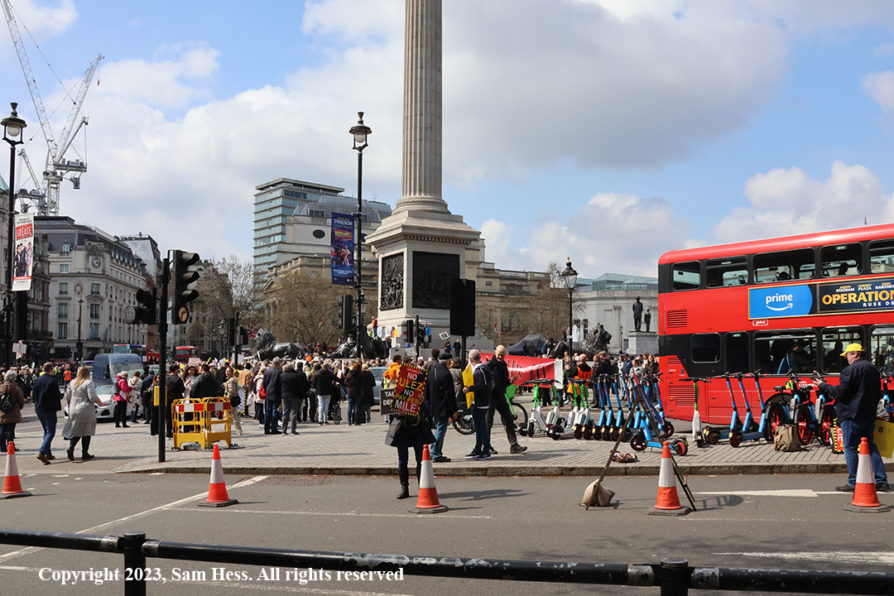
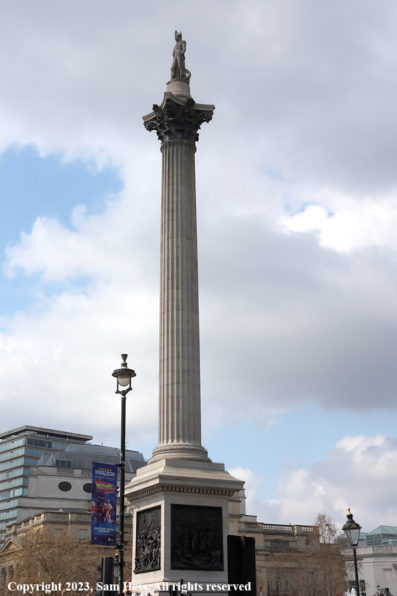


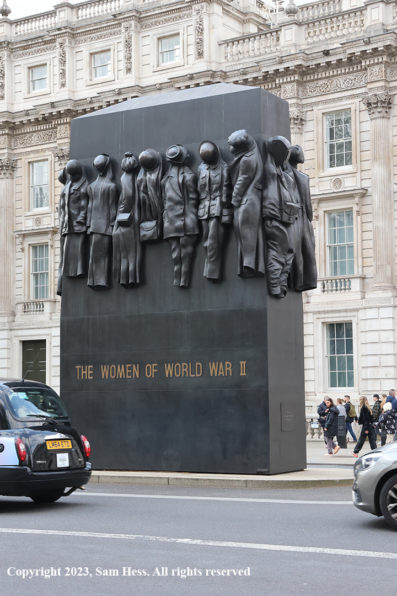
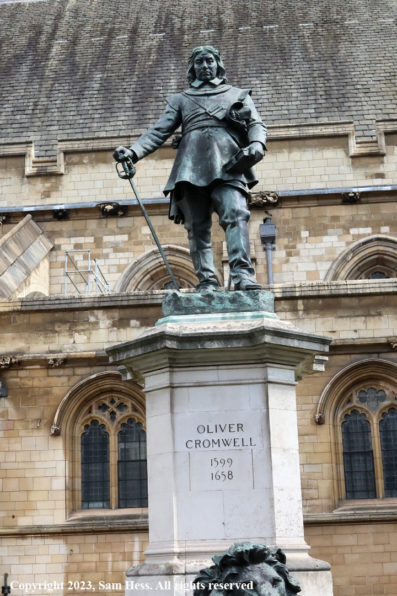
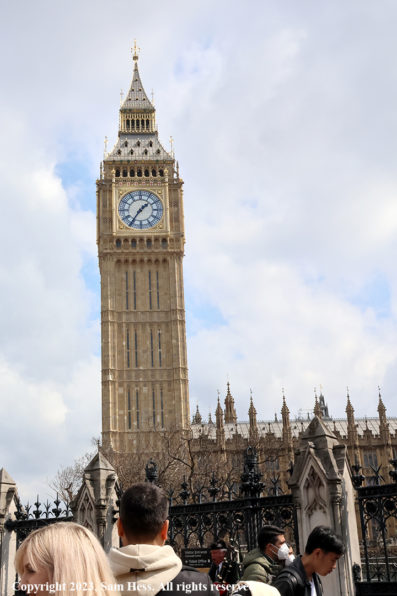
Big Ben is the name of the bell in the tower.

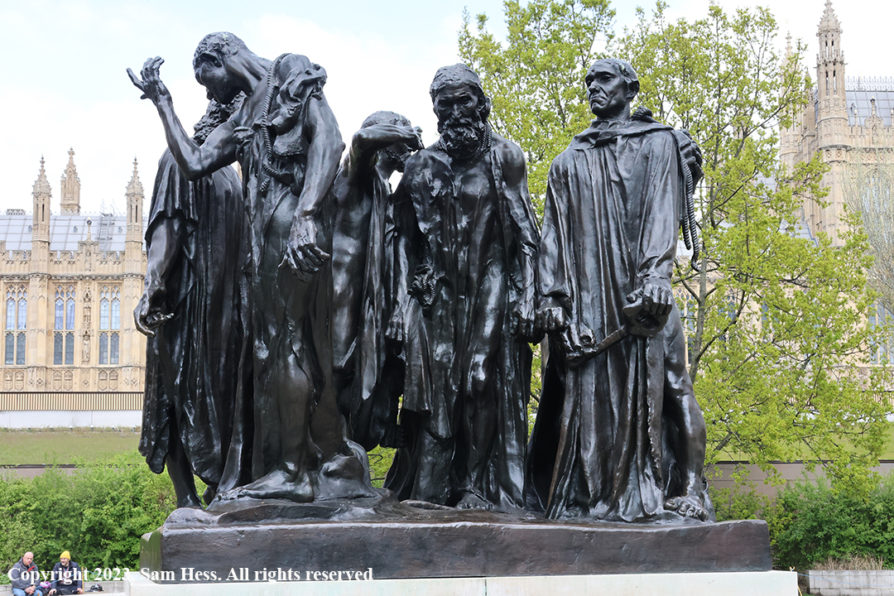
Auguste Rodin
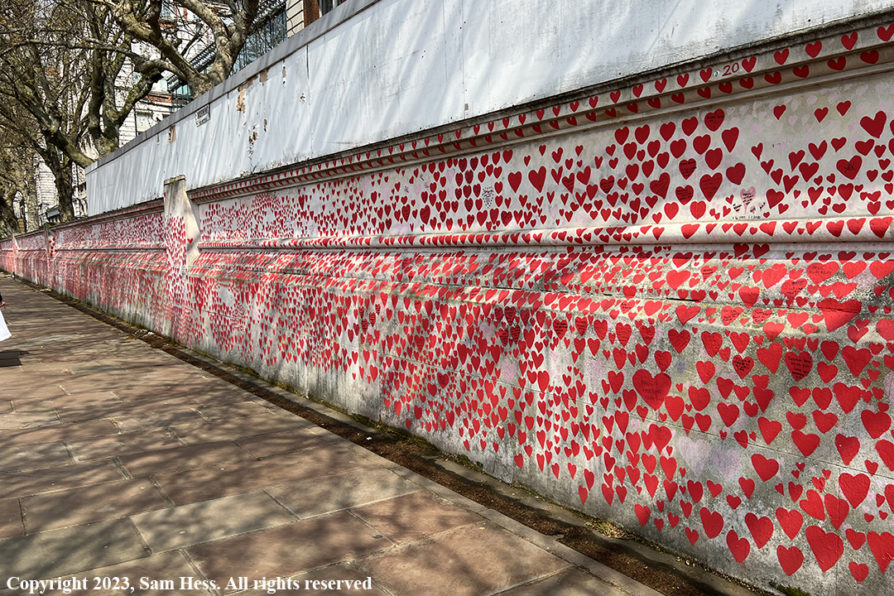
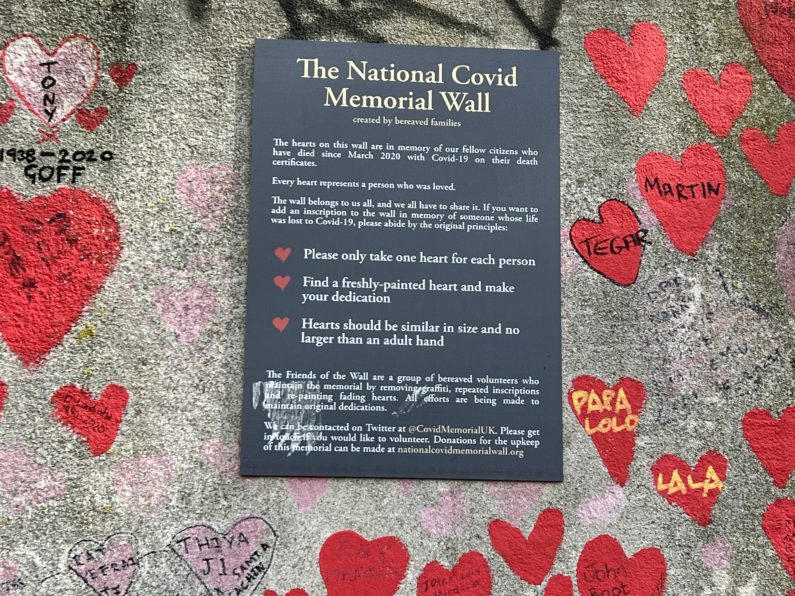
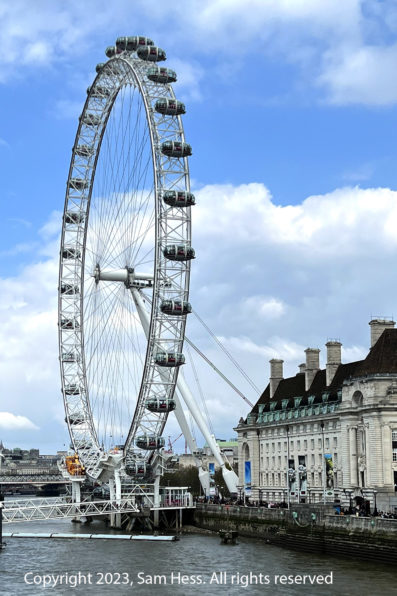
After our return from our walk, we connected with our friend Laura and Bob and attended a reception and dinner in the hotel.
April 16th – London
Today we take our first organized tour, an orientation tour of city landmarks. Among the highlights of the tour was the British Museum and St. Paul’s Cathedral. Taking pictures from a moving bus is not one my favorite things, so I was happy that we took pictures during yesterday’s walk.
Most of our time was in the British Museum. Still, considering the size of the Museum and the various collections, there is no way of doing justice to this great museum in the time allotted. Among the museum’s better-known pieces are the Rosetta Stone and The Elgin Marbles.
At St. Paul’s Cathedral we had a chance to walk around the exterior of this historic building. Adjacent to St. Paul’s is Temple Bar, the ceremonial entrance to the “City,” which was relocated to this spot to allow the widening of the street which ran through it.

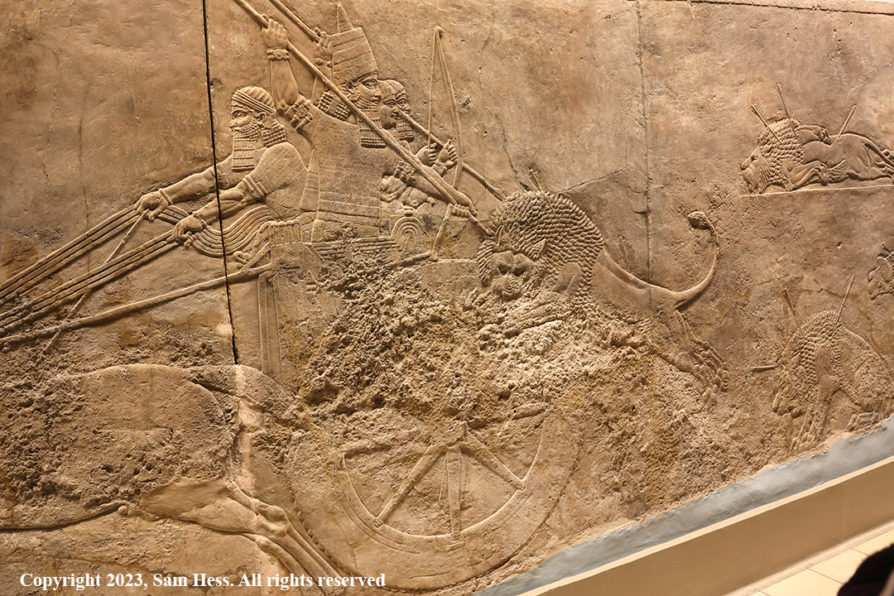
Depicts The Emperor Hunting Lions


Greece wants them repatriated
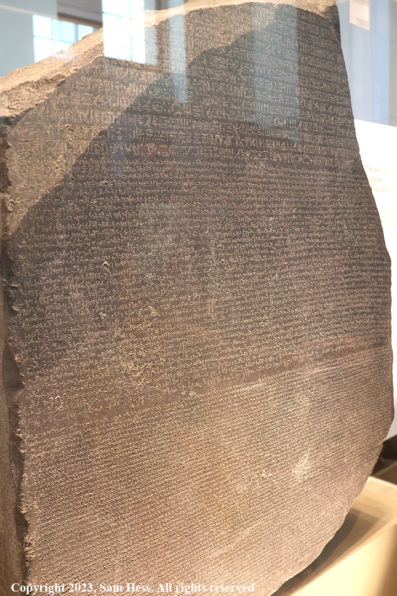
Secure Behind Thick Glass

Open to the public to touch

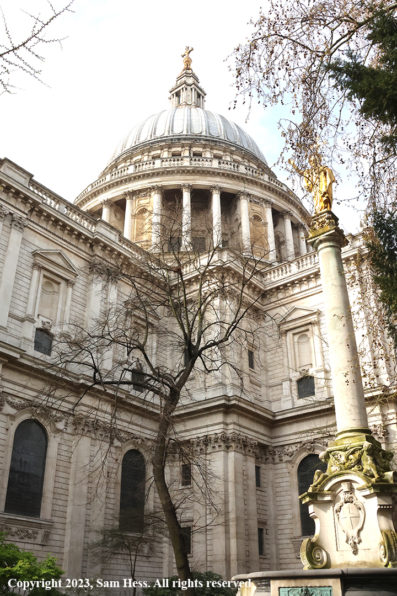
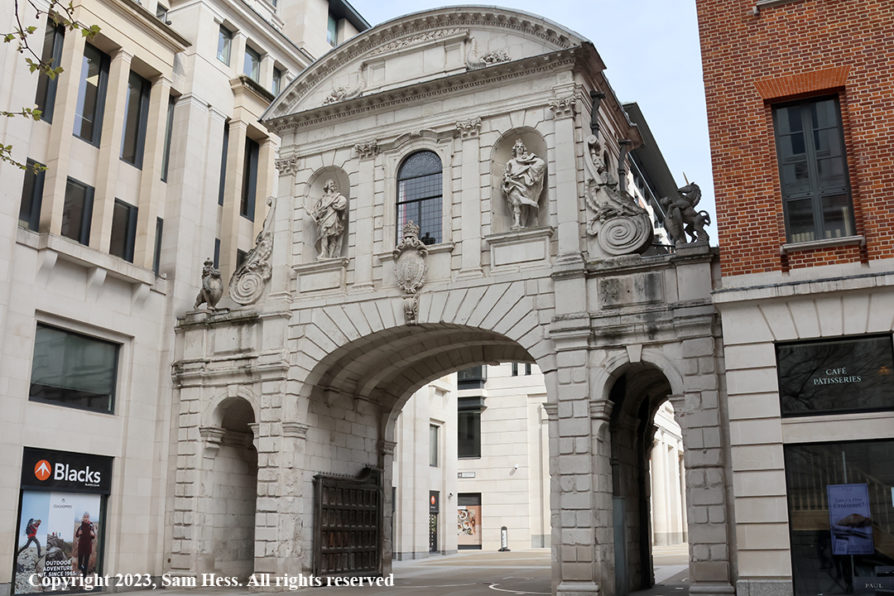
Following the city tour, we returned to the hotel. In the evening, we had a private, after-hours visit to Winston Churchill’s World War II War Room. The command center is located under the streets of Westminster.
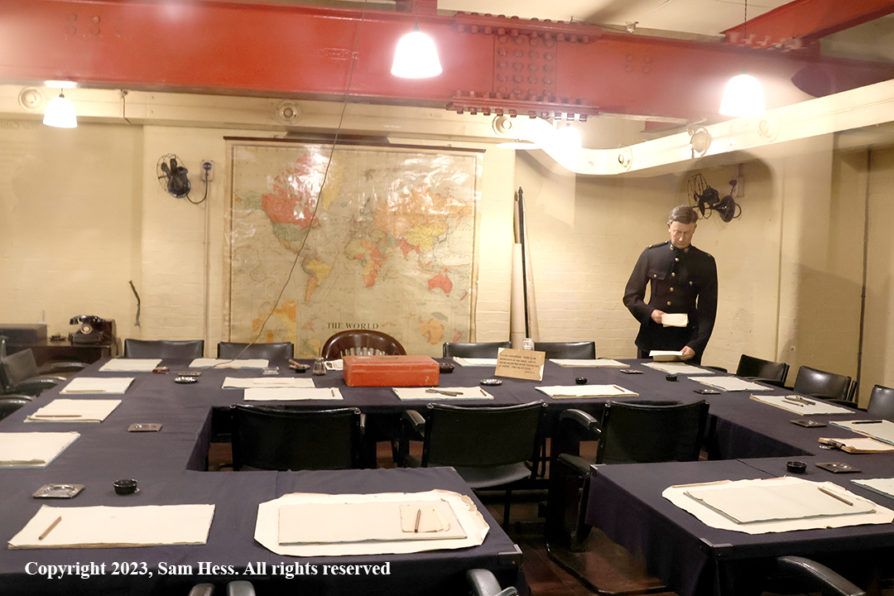
April 17th – Under the Channel to Paris
Yesterday afternoon we packed our luggage and left them in our room for delivery, by truck, directly to the MS Sapphire in Paris.
We went to Paris by way of the “Chunnel,” the 31.5 mile railway tunnel under the English Channel, via the Eurostar high speed train. The trip took about 2-1/2 hours to cover the 212 miles. On arrival in Paris, we boarded busses to the ship.
This Evening we went to the Louvre Museum for a private after-hours tour. Our time was limited, but led by an excellent guide, we saw some of the best-known works in the Museum. The advantage of having a private tour when the museum was closed to the public was from the pictures… we didn’t have to fight a crowd to get in front of the artwork.
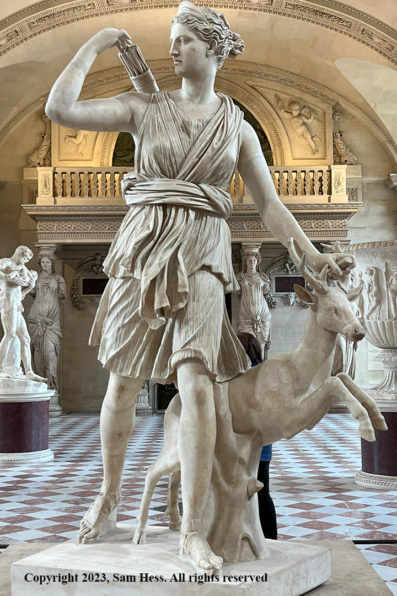
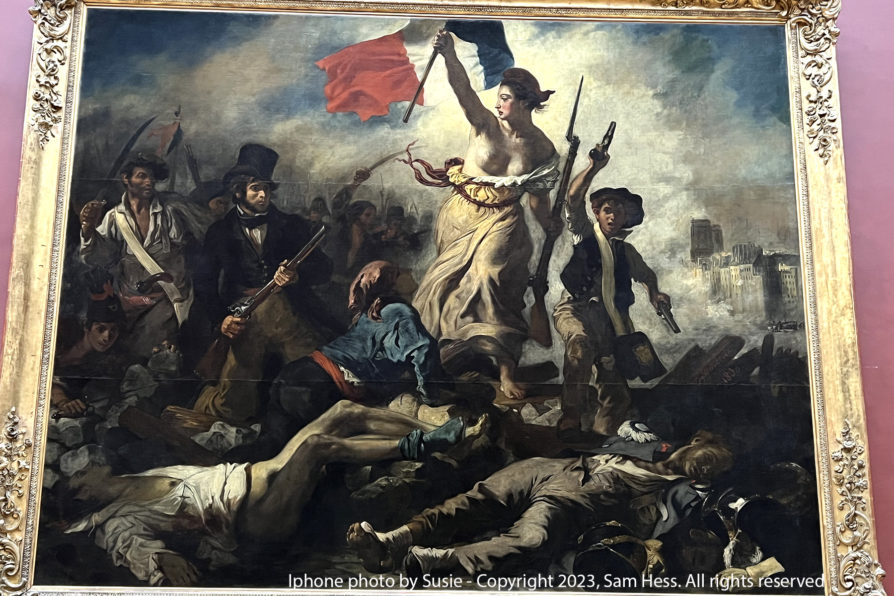
Eugene Delacroix
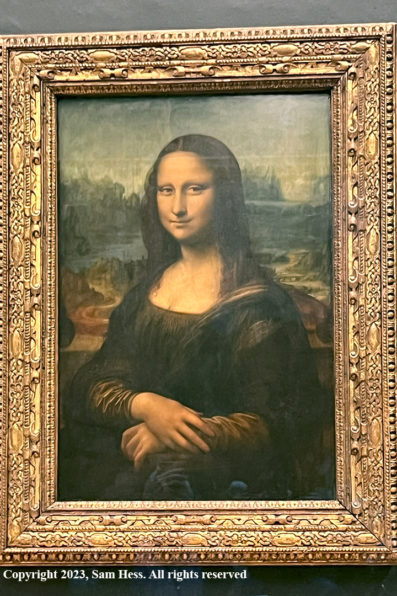
Leonardo da Vinci
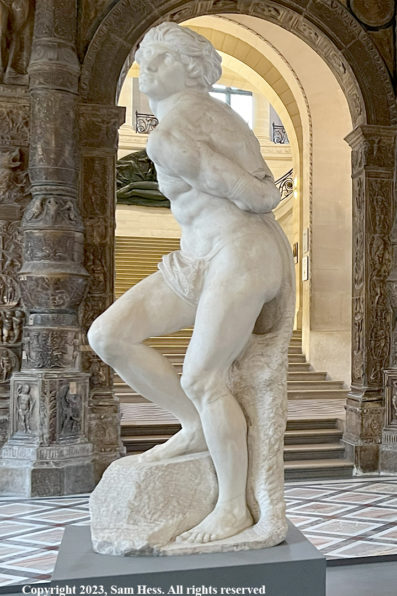

Jacques-Louis David

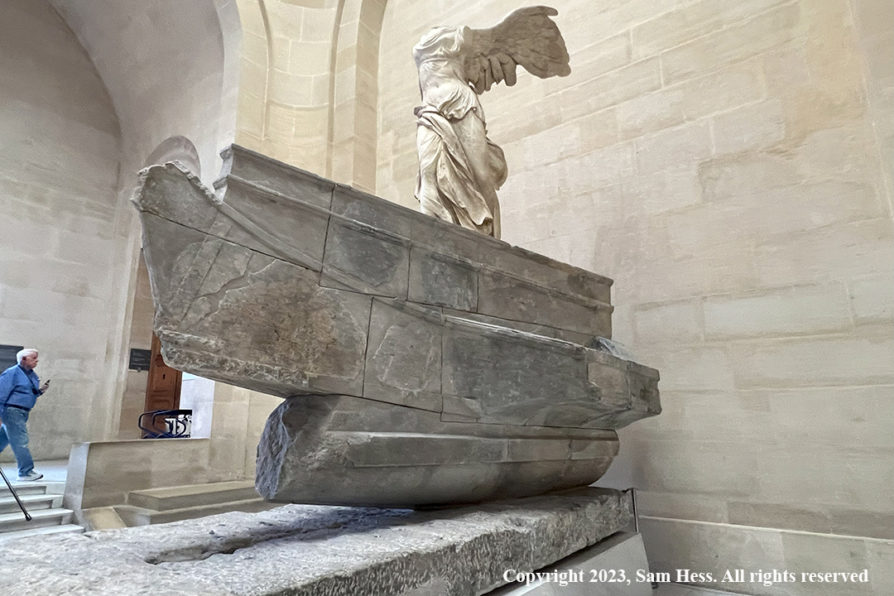
Also known as Nike of Samothrace
April 18th – Paris
This morning we were driven through different parts of Paris. We were fortunate to get the same guide that led us at the Louvre last night. We drove past most of the best-known landmarks. As in London, I was not keen on taking pictures on the move. We will be back in Paris at the end of the cruise and will have a day to explore on our own.
At the morning briefing, an announcement was made that one of our fellow passengers had afternoon tickets to the Musee d’Orsay that they can’t use. Susie and Laura jumped at the opportunity and visited the museum to see its collection of Impressionist art. I stayed on the ship and did some reading.
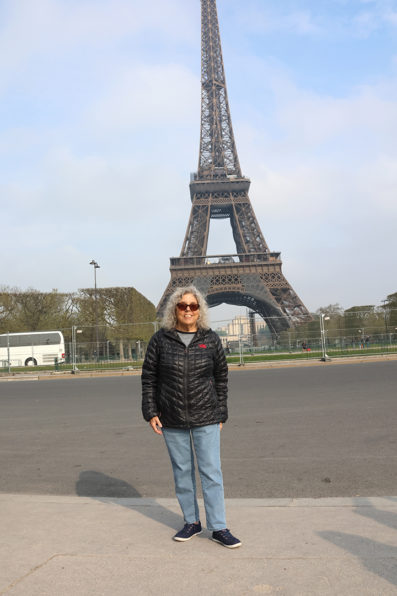
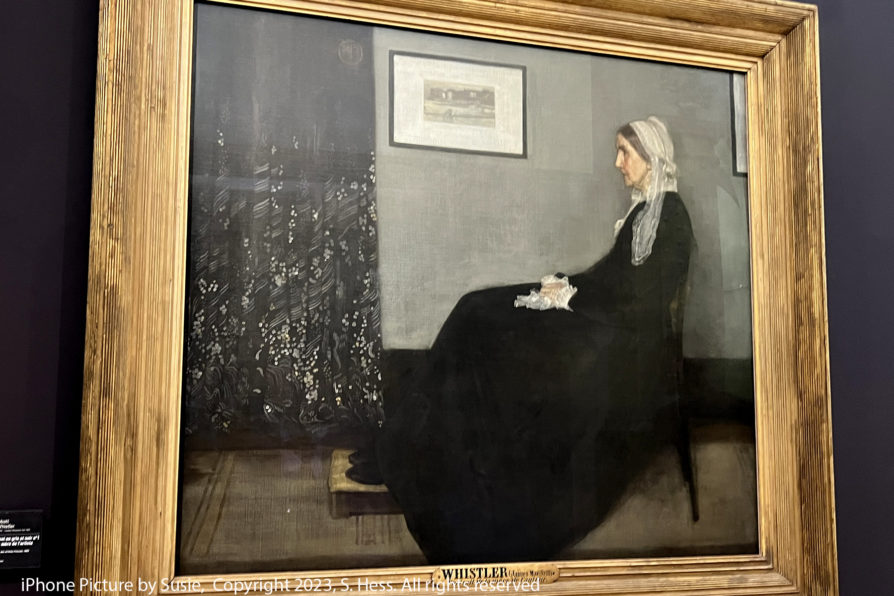
Actual name: Arrangement in Gray and Black No. 1
Later this afternoon we had a chocolate tasting tasting and discussion presented by a Chocolatier who produces a line high quality chocolates. Since Susie is allergic to chocolate, I got a bonus package to taste.
April 19th – Paris – Chateau of Versailles
This morning we had an option of a walking tour of Montmartre or Chateau de Versailles. We chose to visit the latter. The chateau is a magnificent palatial estate with a garden that is not to be missed. Unfortunately, we were early in the season and most of the gardens have not been planted yet. We saw the King Louis XVIII’s bedroom, Marie Antoinette’s bedroom, the Hall of Mirrors and several other rooms. Fifteen million people visit Versailles each year. It seems as though they were all here while we were there. Trying to take pictures in this environment was my least favorite part of the tour.
The ship sailed for tomorrow’s destination this afternoon. We sailed upriver for a bit to a wide area where it could turn around for the downriver destinations. The Seine has many low bridges in Paris. The cruise ships and barges running on the river, have wheelhouses that are lowered so they can get through. The ship’s helmsman sticks his head out of a hatch in the wheelhouse to see his way. We were on the upper deck and told to stay seated while we were moving under the bridges.
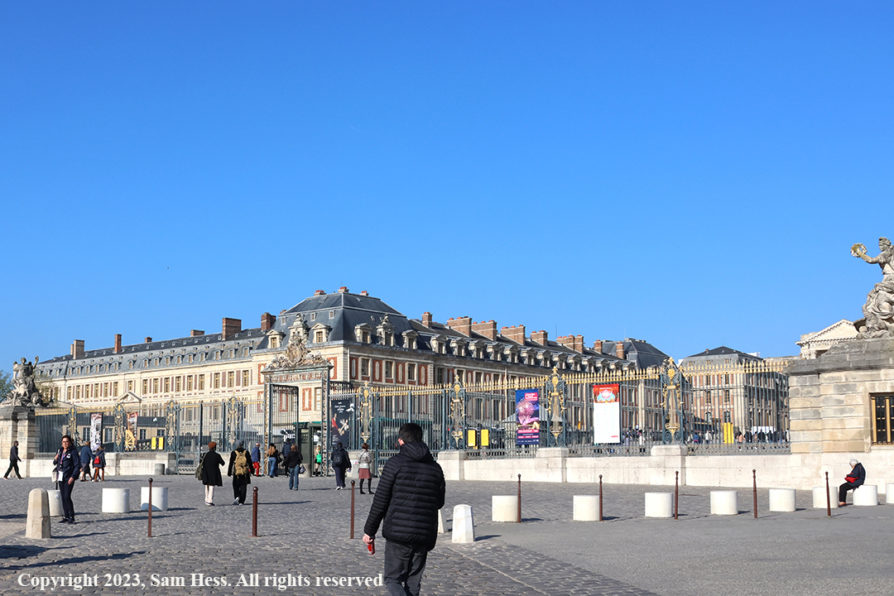
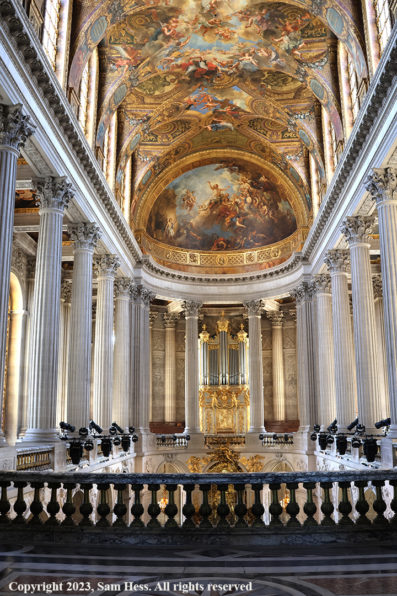

Note the crowd

As he imagined himself

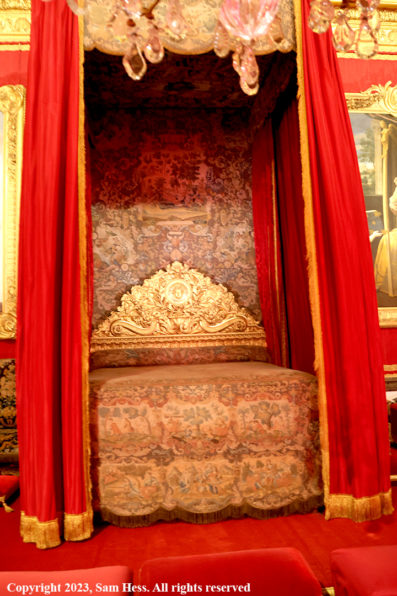
Smaller then the Queen’s

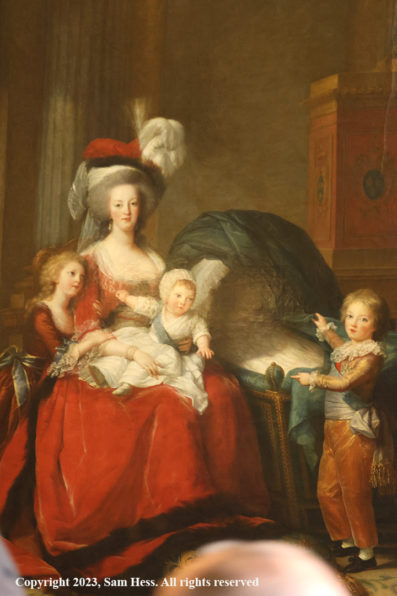
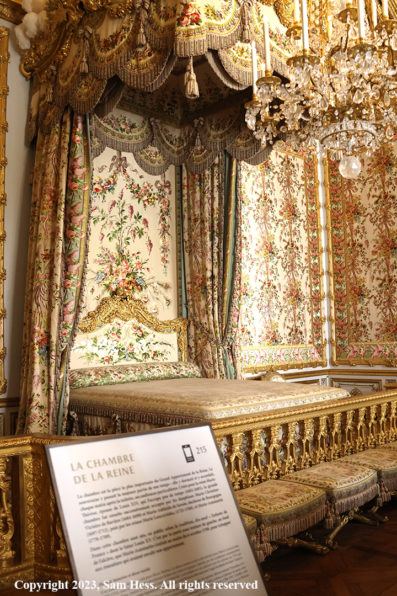
Louis XVI spent some time here





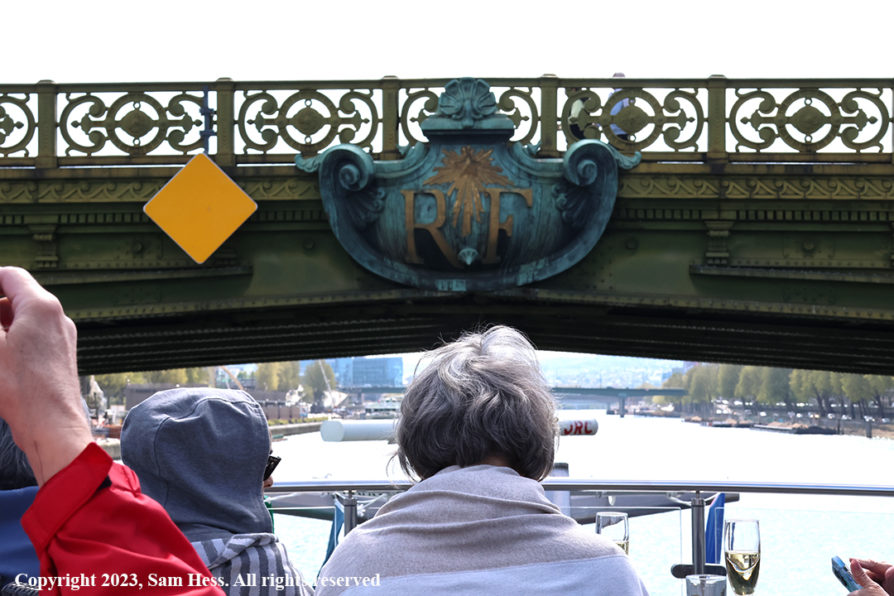

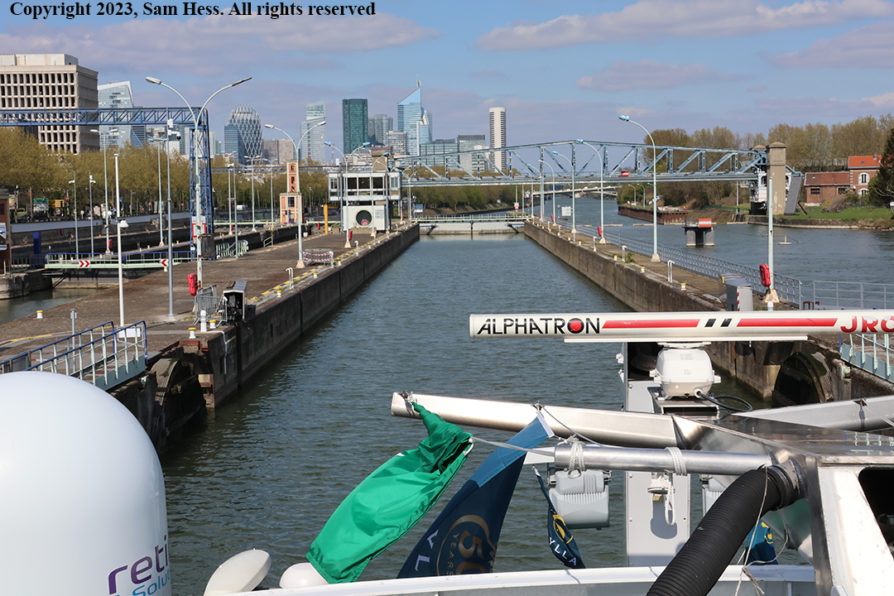
April 20th – Auvers-sur-Oise
This morning we rode from Conflans-Sainte-Honorine for a ride to Auvers-sur-Oise. Vincent Van Gogh spent his last days in this village. Van Gogh was prolific during his last days. The church, Town Hall, wheat field and tree roots, pictured below, were subjects of his paintings. Roots was his last painting before he commited suicide. He is buried in the cemetery on the hill above the town. His brother, Theo, is buried next to him.
Before leaving Aures-sur-Oise, we stopped at the Absinthe Museum. The owner is an expert and has written several books on the subject. She gave us a lecture, through an interpreter. After the lecture, we got a taste of absinthe… not something that I would drink again.
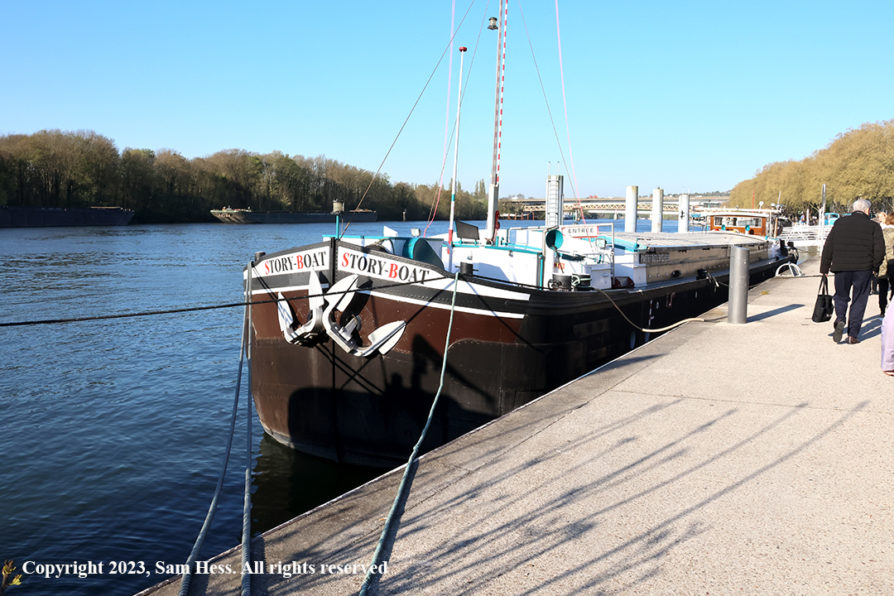
Another nearby barge is a restaurant
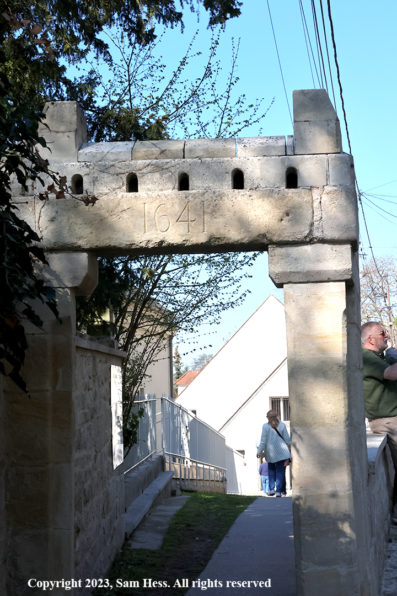
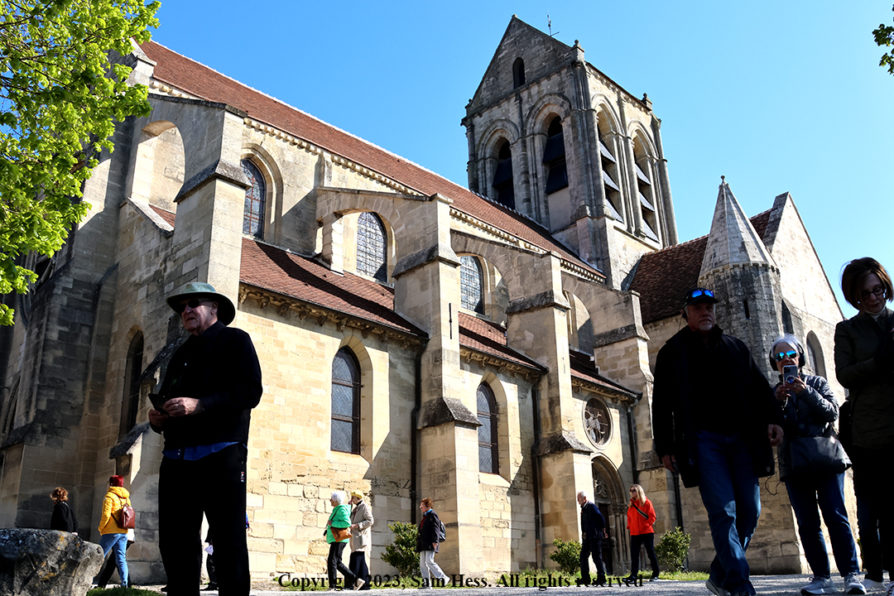
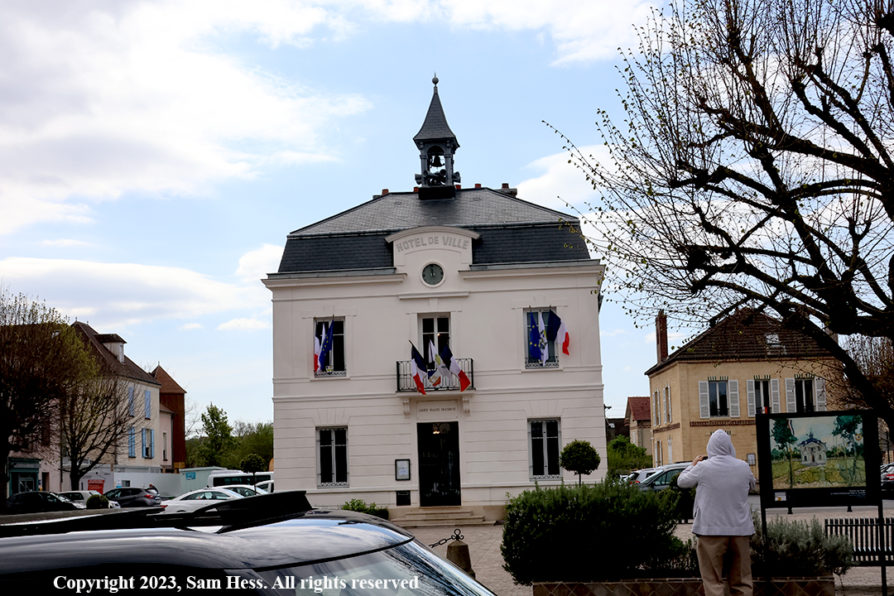
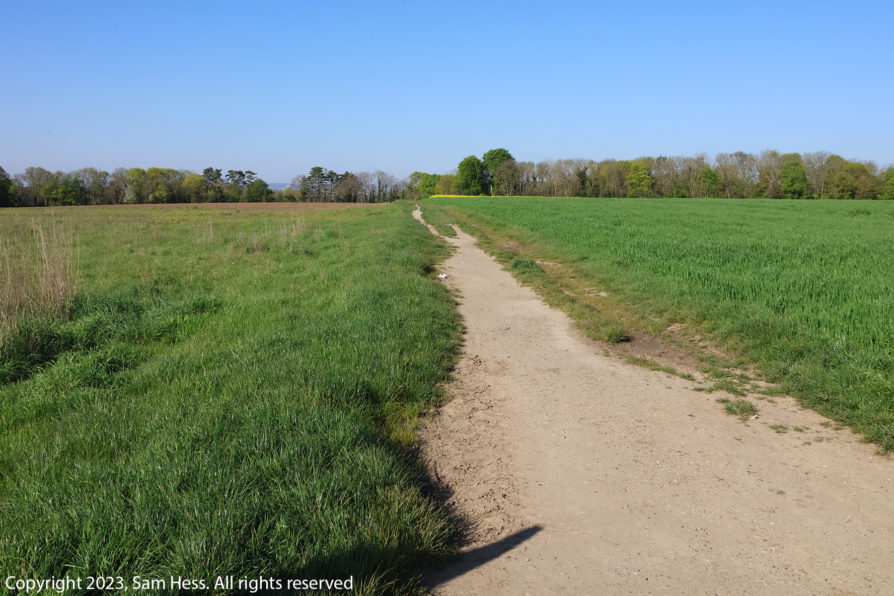
The road passes the cemetery
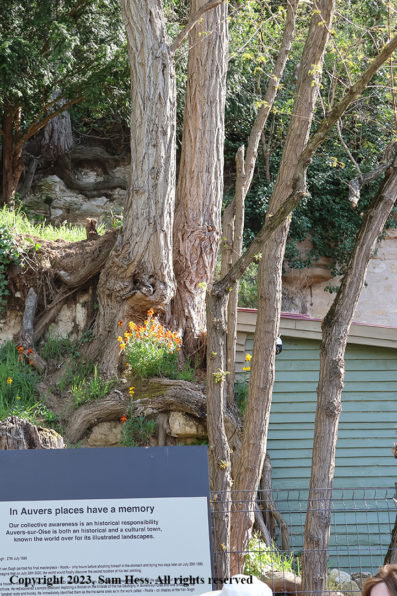
Van Gogh’s Last Painting


Located in the village

April 21 – Giverny – Monet’s Home and Garden
We were driven a relatively short distance from Vernon to Giverny to visit the home of Impressionist painter, Claude Monet. Giverny is a small town with limited access to large vehicles, like our bus. As result we walked to Monet’s home. The majority of the time here was spent in Monet’s Garden, which was full of spring flowers, dominated by a large variety of tulips. Monet’s pond has been the subject of several of his paintings. After our tour of the home and garden, we walked to the Museum of Impressionism.

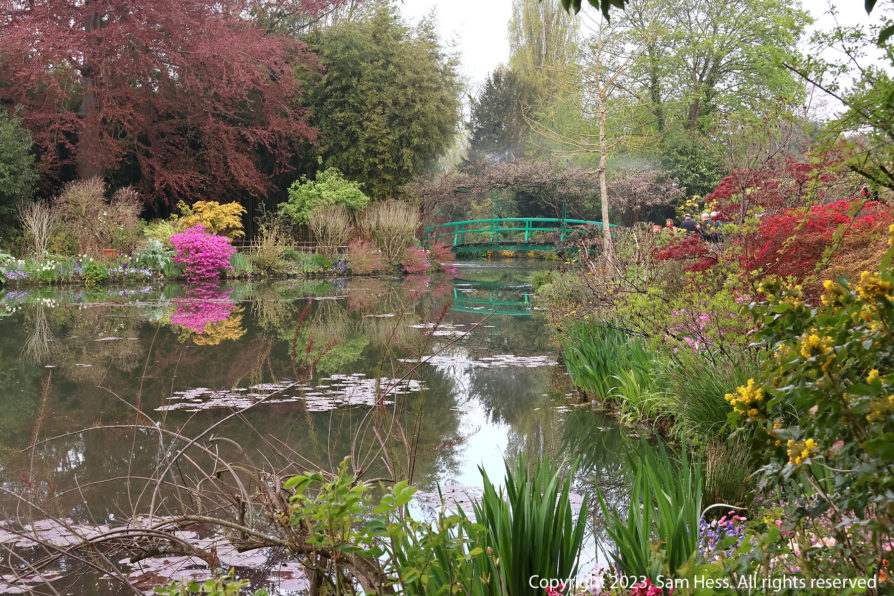
The lilies are just starting to bloom


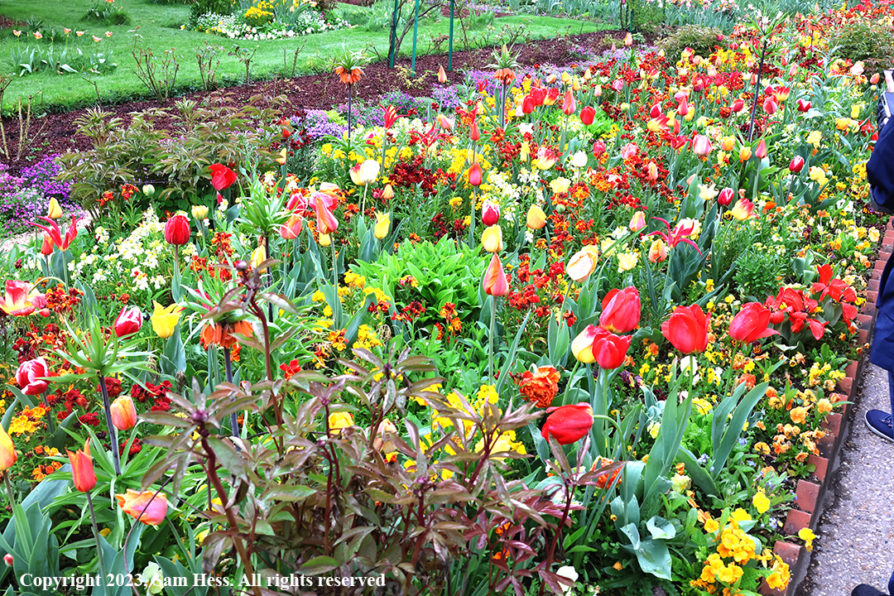
These flowers will be removed and replaced by summer varieties
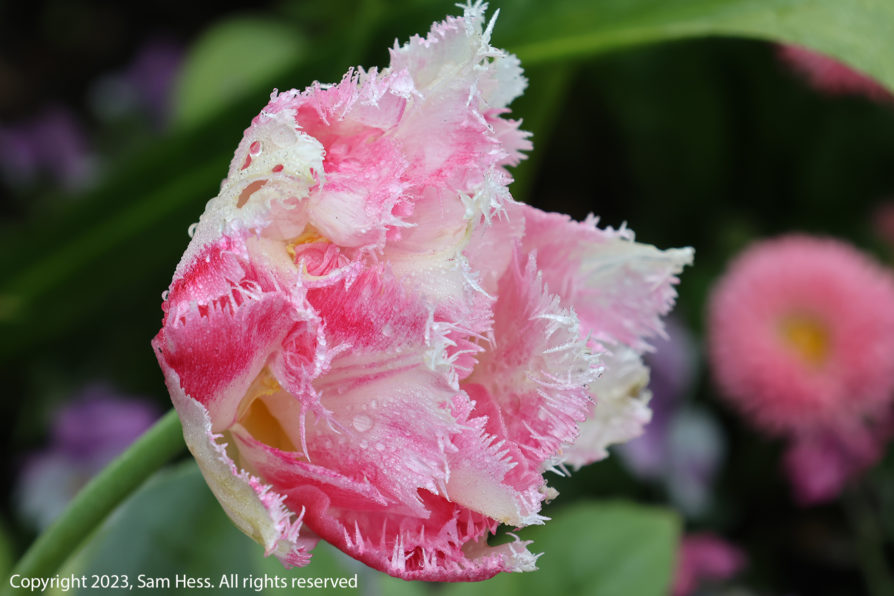
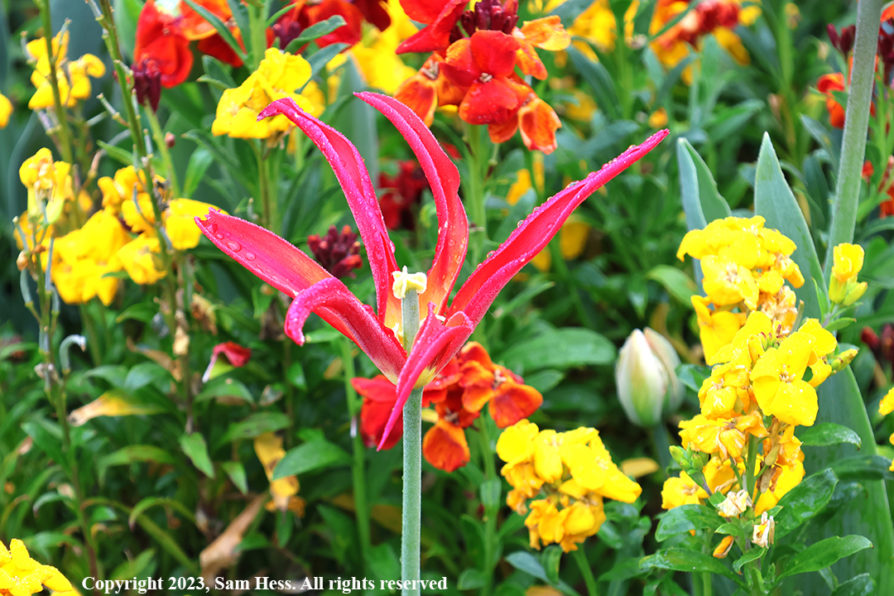
I could not find a name for it

We returned to the ship for lunch, after which we had free time to walk around Vernon. As we were leaving, we saw a group of passengers, including our friends, Laura and Bob, getting ready for a bike trip. Most of our walk was limited to the area around Collégiale Notre-Dame.

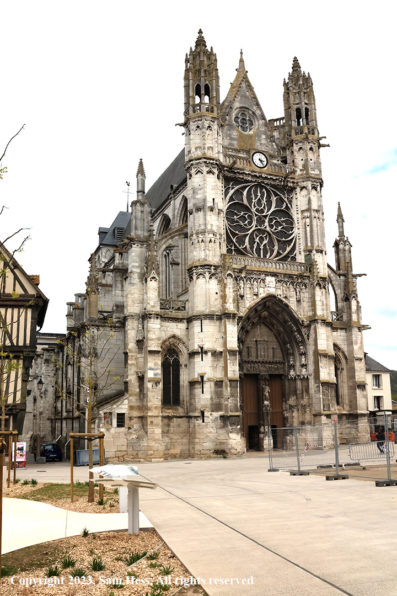

Typical of the construction of the buildings in this area
April 22nd–Rouen
We arrived in Rouen overnight. In the morning, we took a guided walking tour of the city area relatively close to the Seine. Our guide was certainly familiar with the history of the city. However, he seemed to be fixated on the subject of “poop” that covered these streets in medieval times. Rouen was seriously damaged by Allied bombing during the World War II invasion of Normandy. The tour made stops at some of the major sites of Rouen, including The Cathedral, and Gros Horlog. Our tour ended in the marketplace where Joan of Arc was burned at the stake. In the marketplace, a new modern church was built in honor of Saint Joan of Arc. I don’t think it fits with the medieval buildings of the area. Susie and I continued to walk around the town, eventually ending up at the riverfront and our ship.
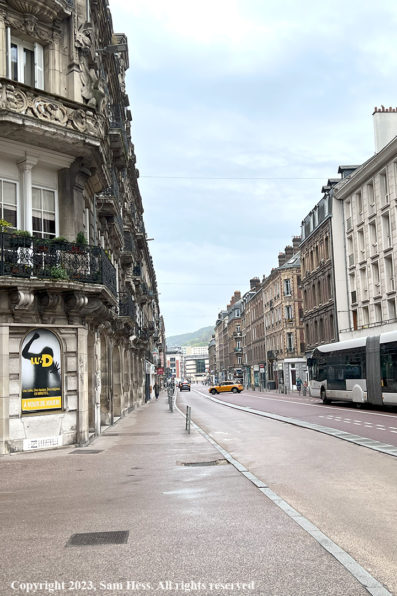
This street ran perpendicular to the Seine and our dock

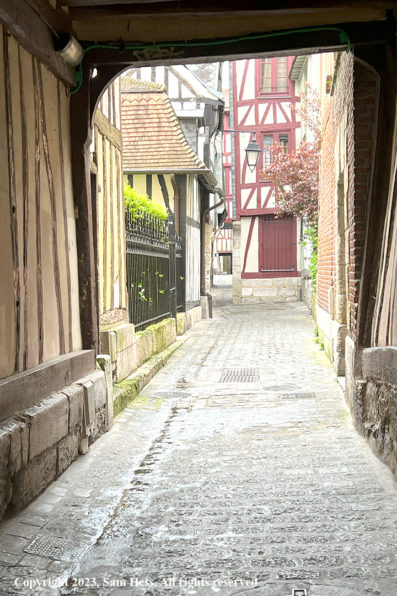
It was big enough for a loaded wagon to navigate the side streets
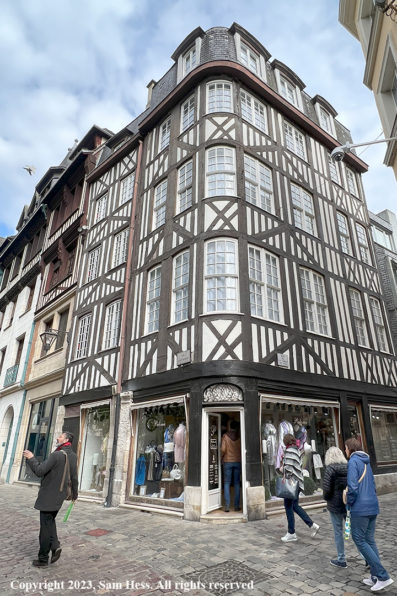
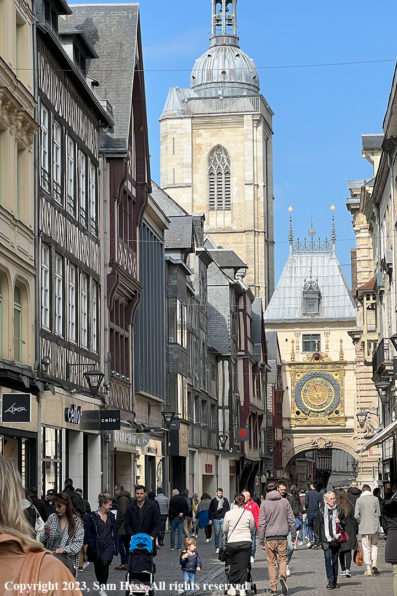


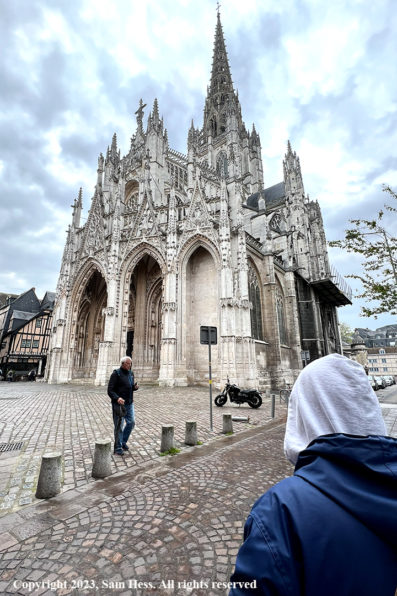

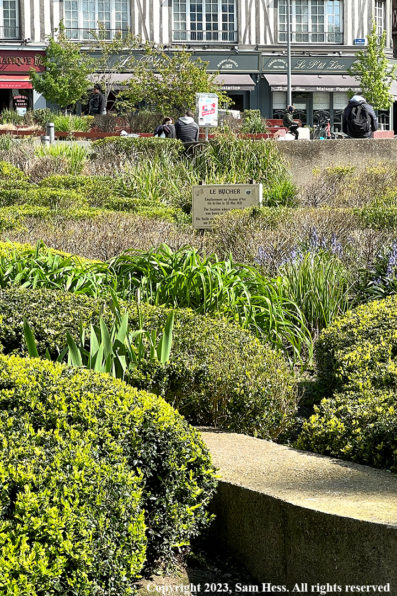
Joan of Arc Burned at the Stake

This evening we were driven to the Chateau du Tillis for a fine dinner and music.

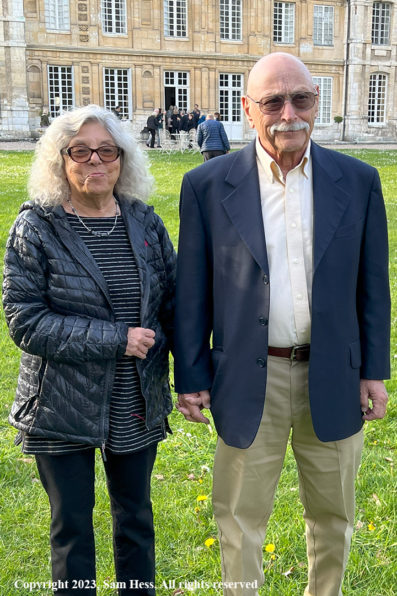
This is as formal as I dressed on any “formal” occasion this trip.
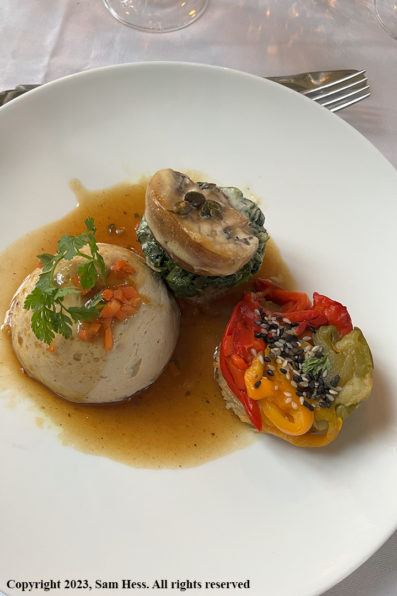

I estimated it at nearly 1000 Calories
April 23 – Etretat and Honfleur
Today we had a choice of touring Caen and Bayeux or Etretat and Honfleur. We decided to go to the latter.
Our first stop was to Etretat, which is located on the coast, north of Le Havre. The weather was cold with intermittent showers, not a beach day. Etretat’s economy is highly dependent on tourism. The beach is bounded by chalk cliffs rising about 300 feet. This is not a beach that is made up of sand, rather it has large pebbles. Above the beach, to the north, is the Chapelle Notre-Dame de la Garde. The chapel is reached from the town by 200 steps. Laura was the only one of us who took the challenge to walk up to the top. Near the Chapel is a memorial to L’Oiseau Blanc, the White Bird, which disappeared in an attempt to be the first to fly across the Atlantic non-stop. Two weeks it disappeared, Charles Lindbergh completed his Transatlantic flight.

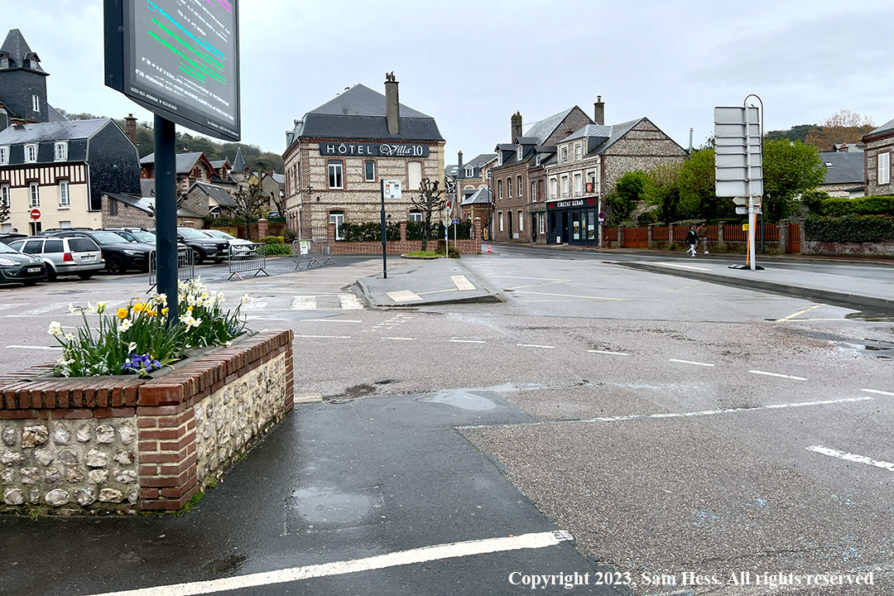
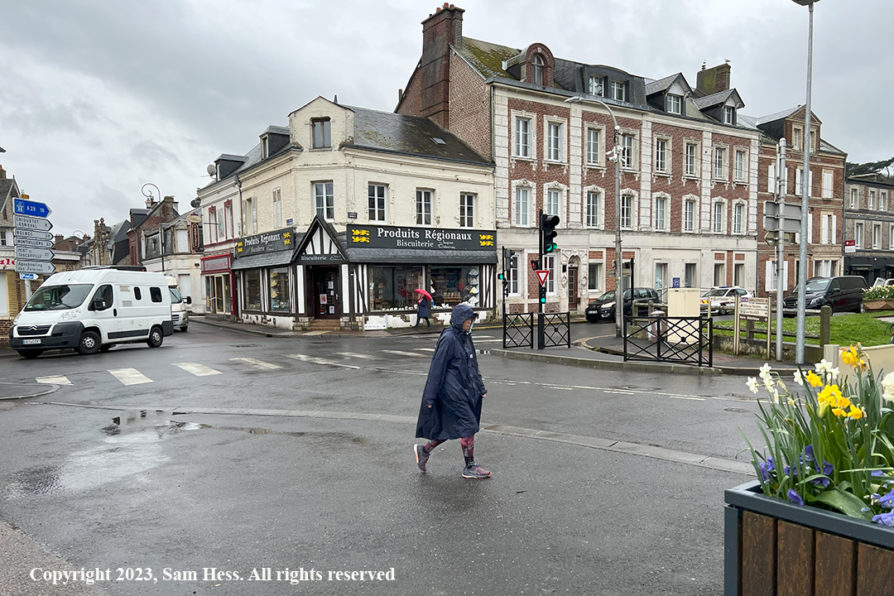

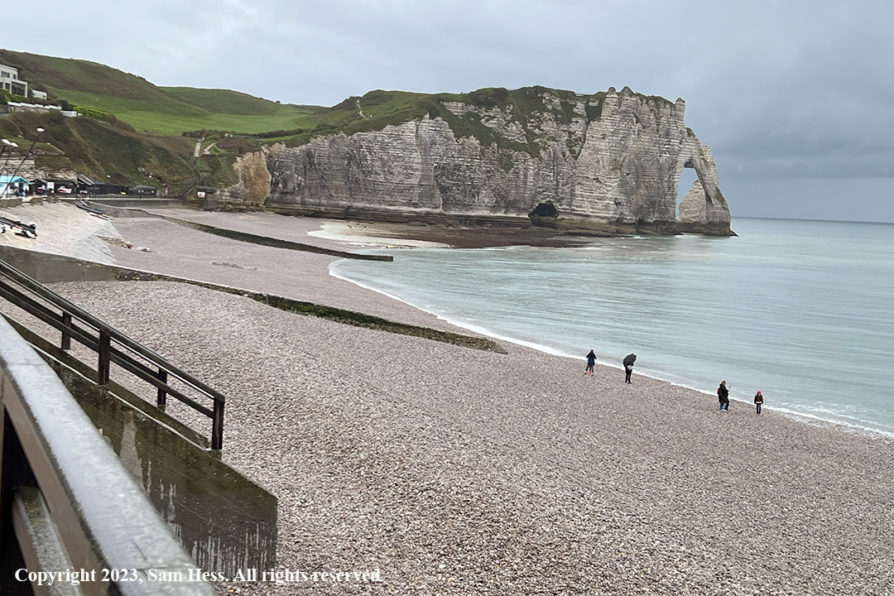

Chapelle Notre-Dame de la Garde

After a few hours in Etretat, we boarded the bus for Honfleur. The trip took us through Le Havre and across the bay on the Pont de Normandie, a beautiful, multi-tower cable stayed bridge. It is the last bridge on the Seine, before it flows into the ocean. Honfleur is a few miles beyond the bridge. The weather turned from intermittent showers to constant rain. Not a good a good day for sightseeing. Laura, Bob, Susie and I decided to go to lunch at a creperie that received good reviews. We spent some time there hoping the rain would let up. When we left the creperie, Laura and Bob opted to walk around the fishing port area while Susie and I headed back to the bus. We were thoroughly soaked.
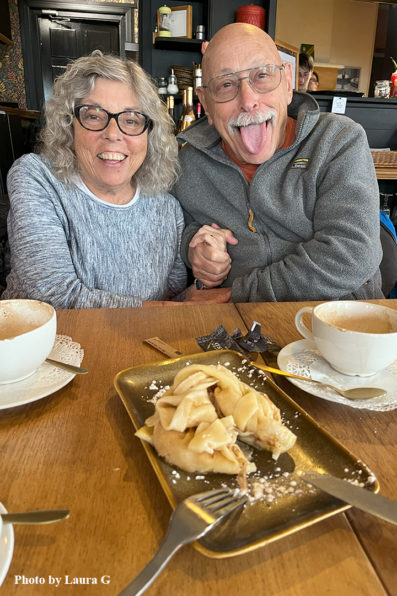
April 24th – Normandy Beaches
This day is one of the reasons that I wanted to take this river cruise. I am a history buff, particularly military history. The 1944 Normandy Invasion beaches and the Normandy American Cemetery and Memorial are places I have been wanting to visit.
The first stop on our tour was at Pointe du Hoc, a high cliff overlooking Omaha Beach. It is lined with bunkers that have a clear line of fire on Omaha and Utah beaches. Walking along the edges of the cliff and seeing the view from the bunkers, I was amazed that the US Army Rangers were able to climb up the cliffs and neutralizing this strong point. They did it at high cost in casualties.
Our next stop was at Omaha Beach at one of the breakout points going inland from the beach. There is a memorial on the beach. Our guides provided roses to place on the beach. Breaking out of the beachhead led to hedgerows enclosed fields that provided cover to the German military. Allied forces had to fight from one hedgerow to another.
From Omaha Beach we went to the Normandy American Cemetery and Memorial. To view the seemingly never-ending lines of grave markers was quite emotional.

US Army Rangers Memorial is on top of it

When daylight came on D-Day, the horizon was filled with invasion fleet ships

Entrance was on the land side and was protected by machine gun emplacements
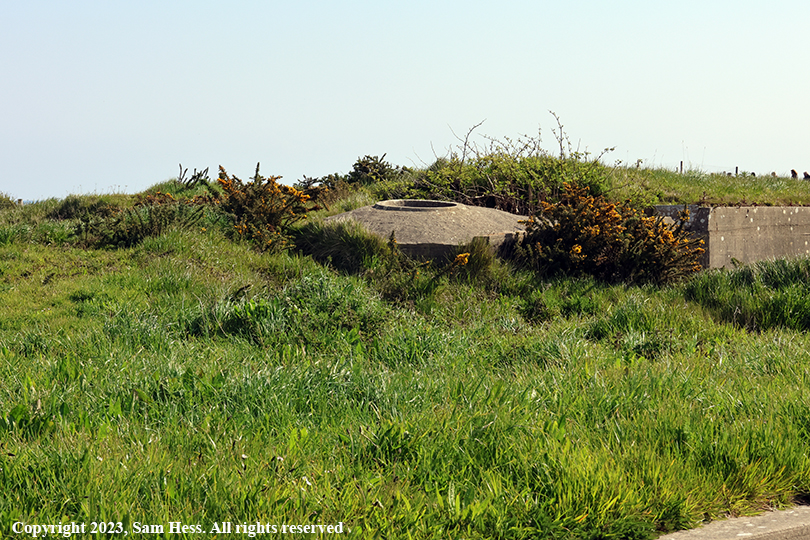
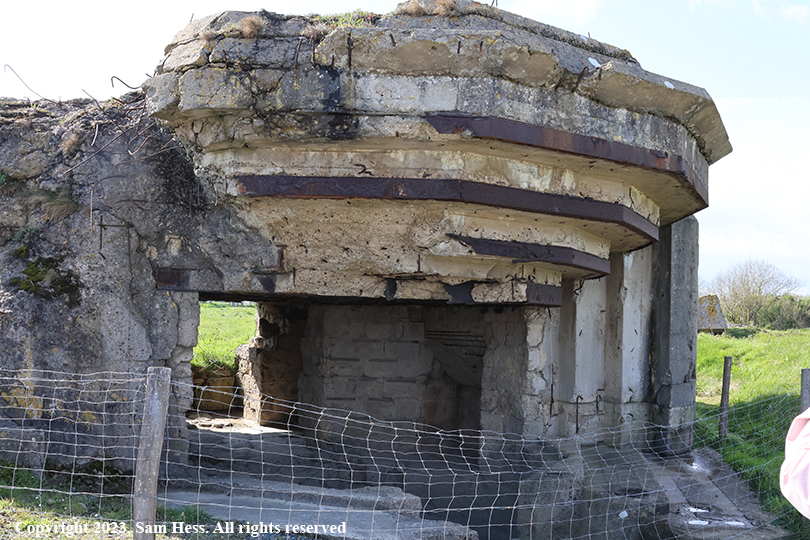
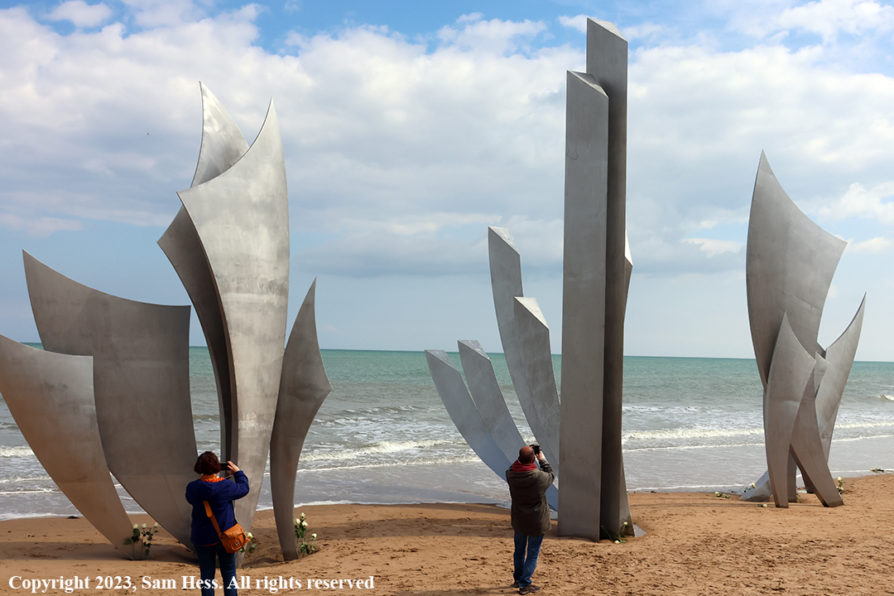
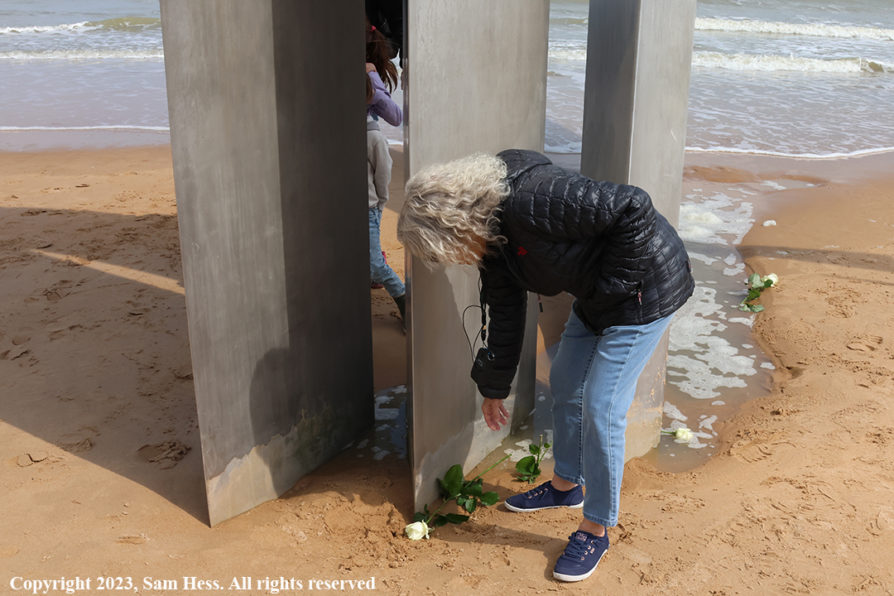



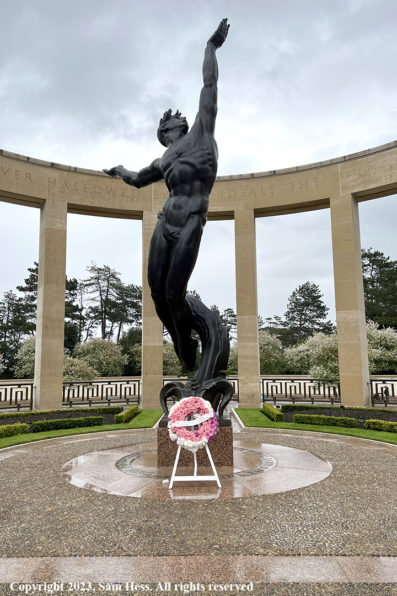
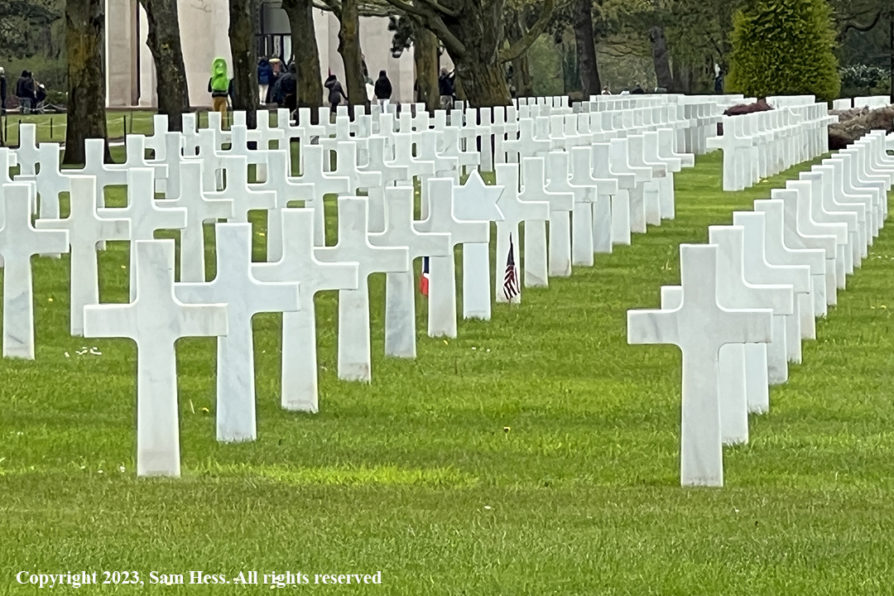
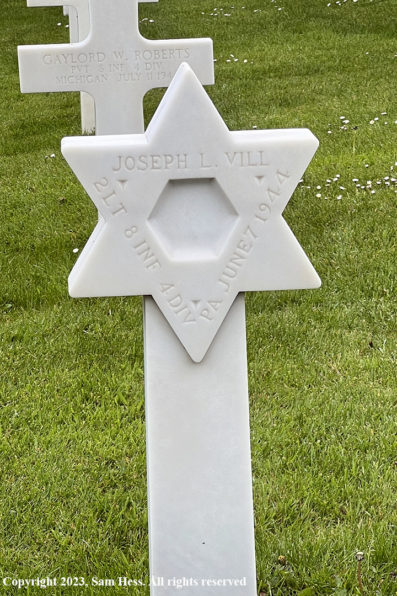
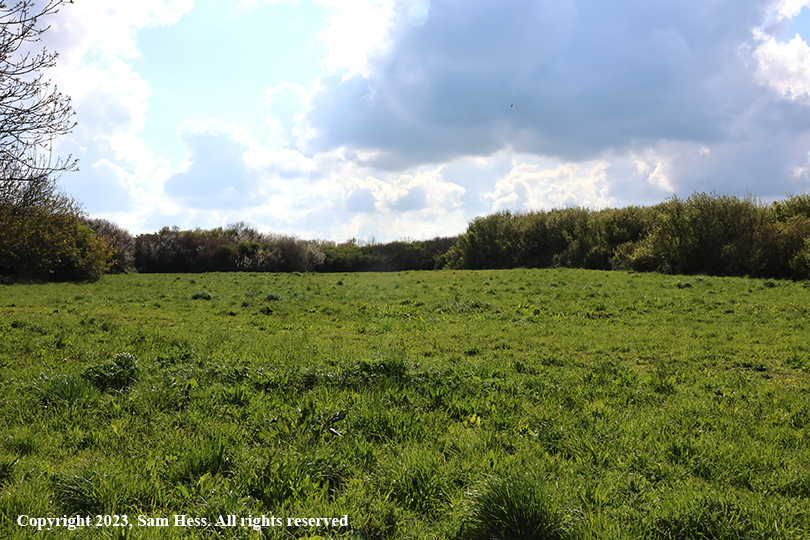
This afternoon we started back upriver to Paris.
April 25th – Les Andelys
This morning we stopped in Les Andelys, a town composed of two villages. It is located on one of the bends of the Seine River. From here we broke up into groups heading to three different places, each group on a different schedule.
Our first stop was to a local cider house, Le Ferme des Ruelles, to learn about the various Norman cider and calvados. The cider house owner gave us a lecture about the farm and his plan to take it completely “off the grid” with renewable resources available on the property. We also had an opportunity to sample some of the products made on the premises.
Our next stop was on a hill overlooking the impressive ruins of Chateau Gaillard. The Castle was constructed by Richard the Lionheart. Richard was King of England and Duke of Normandy. The tour bus took us up to a hill overlooking the castle. It also gave us a great view of the town of Les Andelys.
We then returned to the town and stopped at Collégiale Notre-Dame des Andelys, which was built between the 13th to 17th centuries. In the church there are two columns, one is topped by a lion’s head representing Richard the Lionheart, the other is a monkey’s head representing his brother, King John of England, who rebelled against Richard and took his crown.
We also viewed a statue commemorating native son, Jean-Pierre Blanchard, who with American, John Jeffries, made the first balloon crossing of the English Chanel.
We returned to the ship and set sail for Paris.
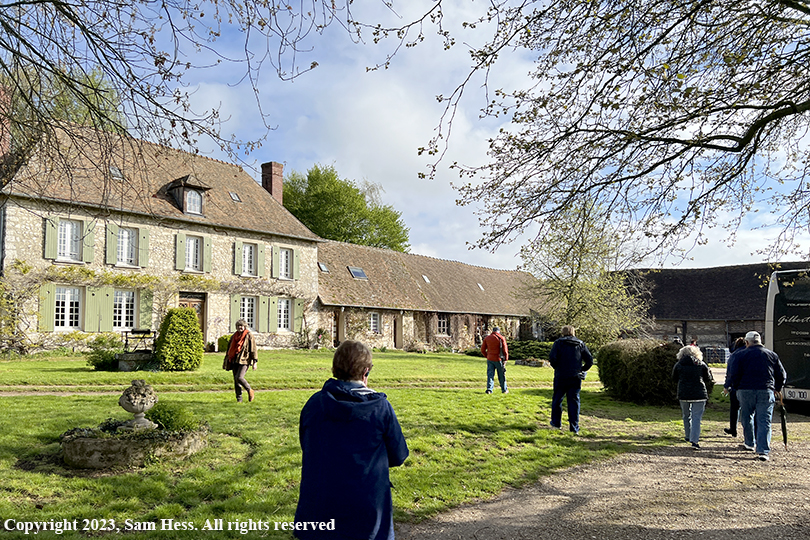

Explaining his plans for the farm

We tasted ciders containing up to 40% alcohol

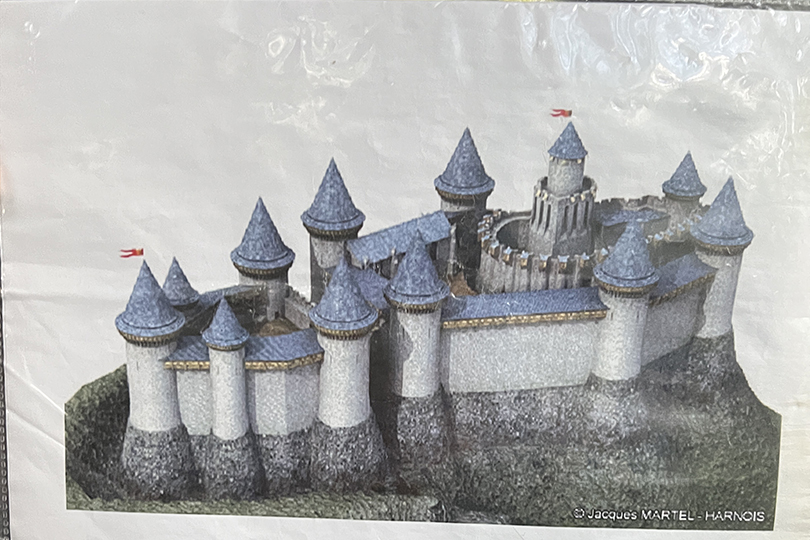

Collégiale Notre-Dame des Andelys in the foreground

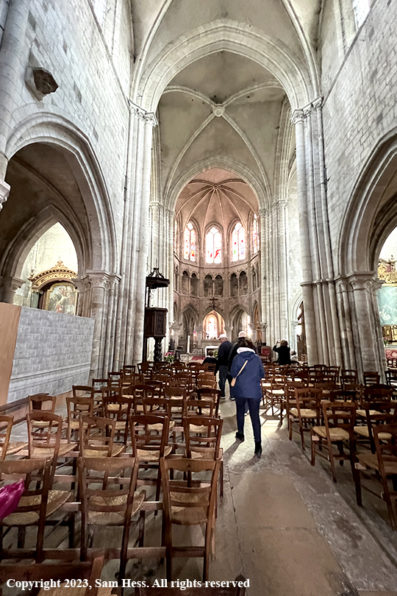
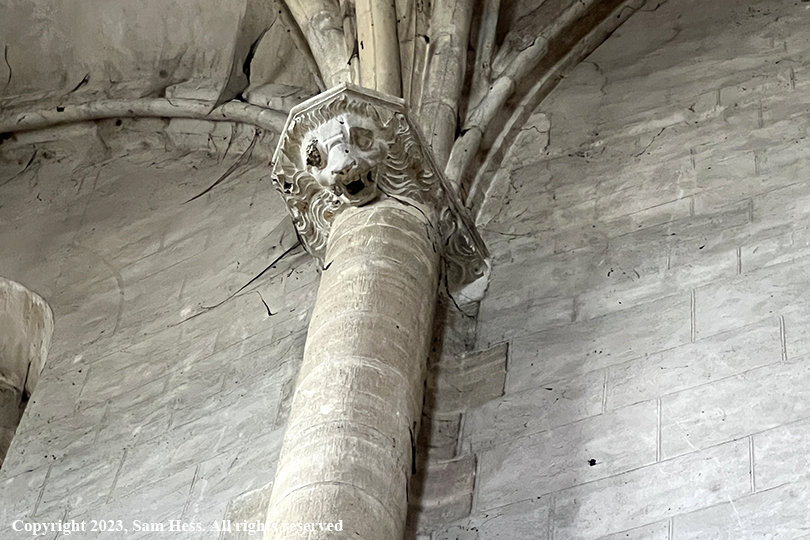

April 26 – Paris
This morning everyone had to depart the ship early so it could be prepared for the arrival of the next group of passengers this afternoon. The Tauck team coordinated the transportation of the departing passengers to the airport or other destination. We had booked an extra day in Paris and were driven to the historic Intercontinental Paris Le Grand Hotel. Check-in time is after 3pm, so we had some time to kill. We checked our bags and walked around the area, including the famous Galeries Lafayette department store. When we got finally got into our room, we were fortunate to have a good view of the Palais Garnier, the Paris Opera House.

Additional floors are above the base of the dome
April 27th – Paris
Today was a day for walking. We started walking towards the Tuileries Gardens by way of The Place Vendome until we got to the Rue de Rivoli.
Susie suggested that we first go to Angelina Tea Room so that “I should taste their famous hot chocolate.” It is located across the street from the Tuileries Gardens, which was what I planned to be our target for the morning. The tea room is very popular and we expected to have long line before getting. As it turned out, the line was relatively short. Instead of the hot chocolate, I ordered a cappuccino and macaron. The macaron was not what I expected. It was several times bigger than any macaron I ever had before. As it turns out, that was my early lunch. Incidentally, there is an Angelina Tea Room in the Bryant Park area.
Having absorbed some extra calories, it was now time to take that walk in Paris. We crossed the Rue de Rivoli and into the Tuileries Gardens. We walked the gardens to its end at the Place de la Concorde, which is located between the Tuileries Gardens and the Champs Elysees. We spent some time looking around the Place de la Concorde, then walked on Rue Royale to the Boulevard de la Madeleine and arrived back in our hotel in mid-afternoon.
This evening we met up Eileen and Frank and Marsha and Ed. We walked, almost back to the Rue de Rivoli to a restaurant for dinner.
A lot of walking but a great finish to a very good trip.
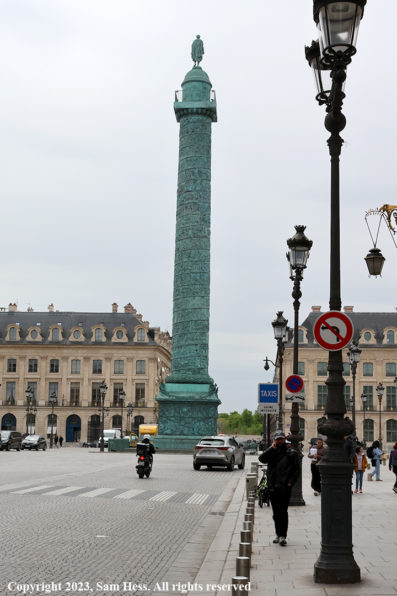
Place Vendome
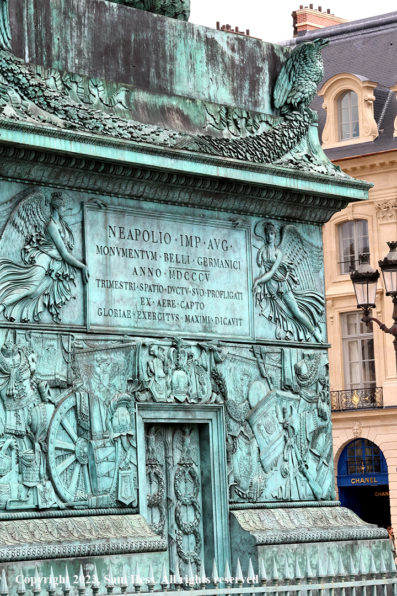
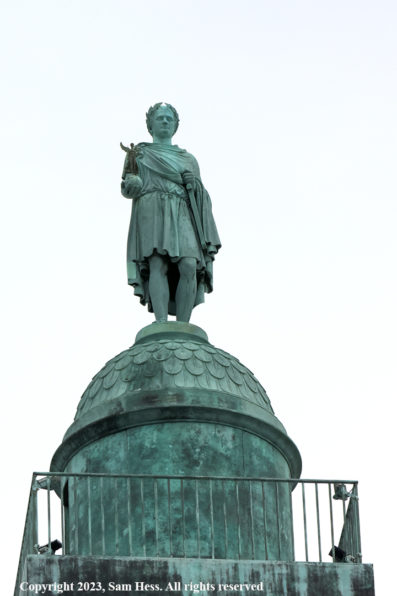
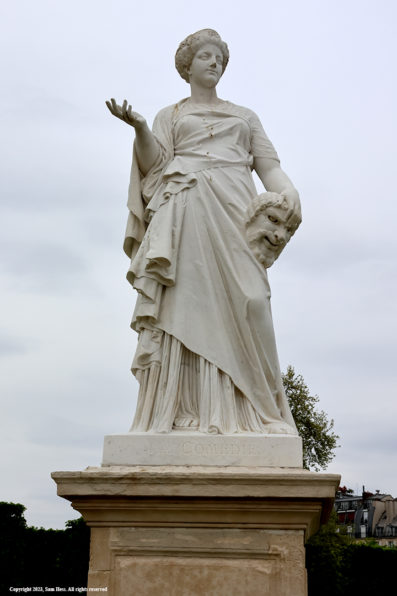
Tuileries Garden

Tuileries Garden
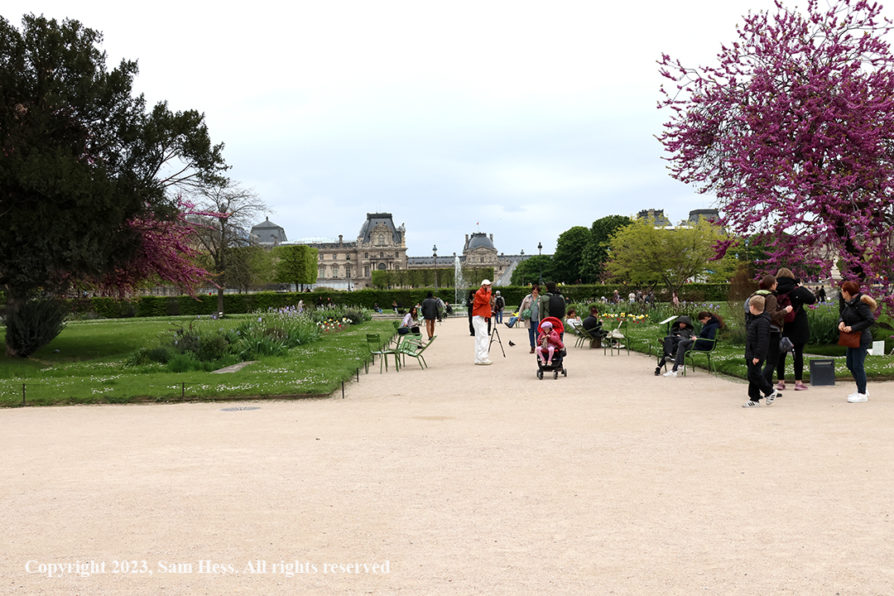
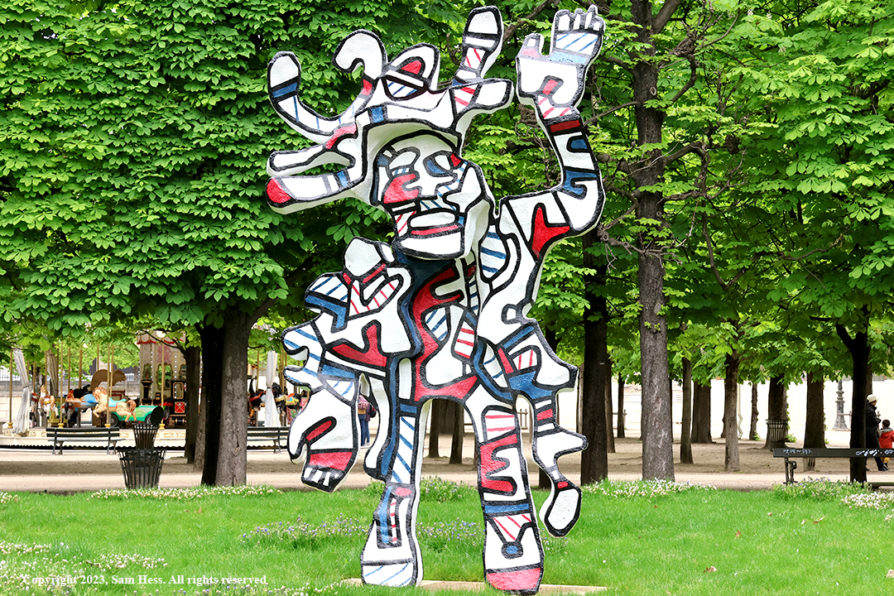
Modern art in Tuileries Garden

Place de la Concorde

Viewed from Place de la Concorde
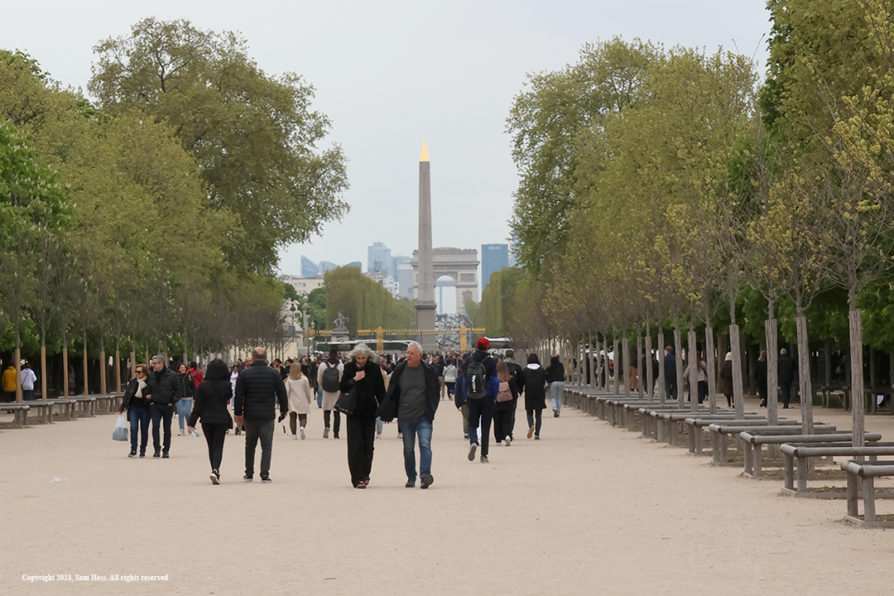
Viewed from Place de la Concorde

US Embassy is partially seen at left
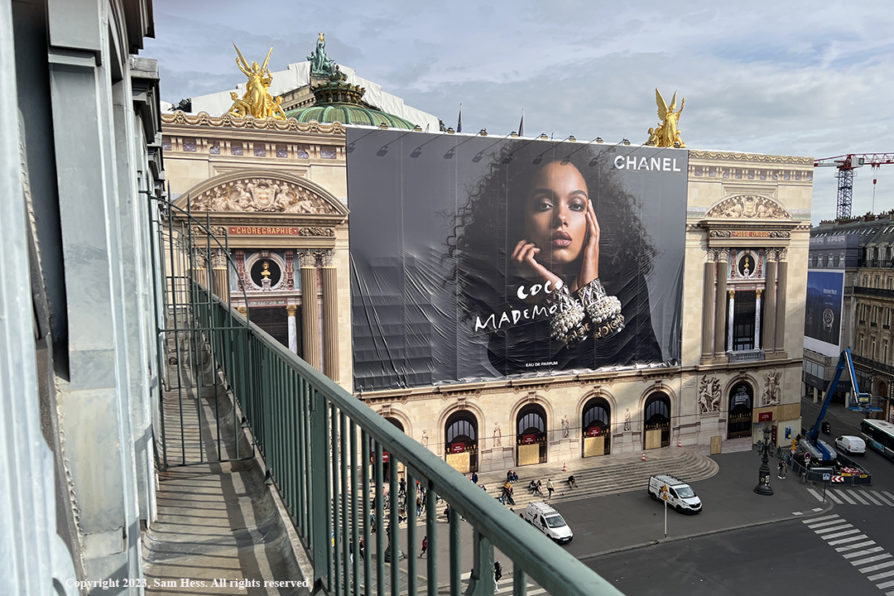
No Phantom in site
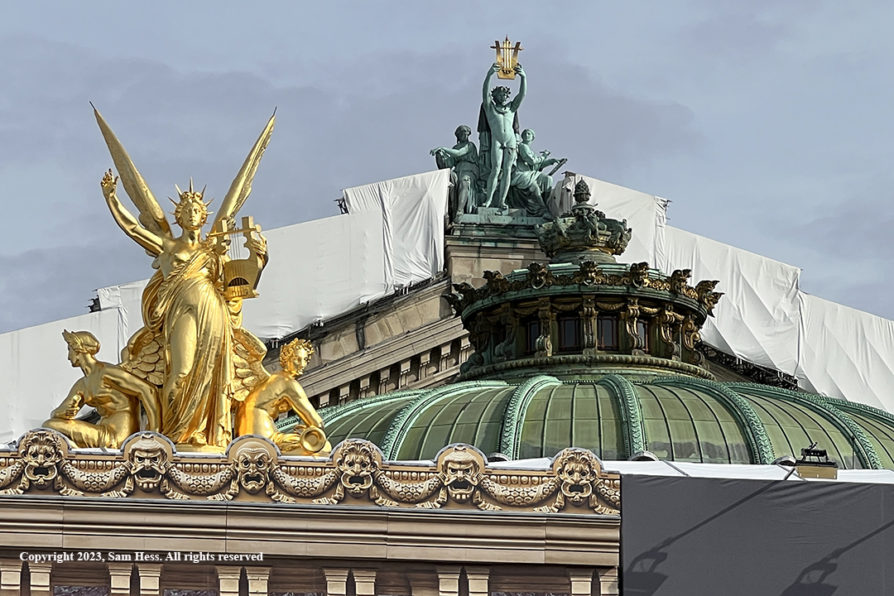
Taken from our hotel fifth floor balcony
April 28th – Heading Home
Susie and I agree that this trip was great. It prompted us to book another river cruise in the Spring of 2024. At this point we do not have any major trips planned… but you never know.
Thank you for sharing another interesting travelogue. It brought back 2 images from a trip that we took to Italy and France, with the then adolescent children, as 1992 ended and 1993 began. On January 1st, we rented a car in Paris and drove to Versailles and Chartes. The magnificent cathedral at Chartes was open, but only the winterized grounds at Versailles were available for our view. One of my favorite photos from that visit is of a burlap-covered statue with one unprotected arm stretching upward through the cloth folds. On the way out of Paris, we had stopped at a US military cemetery, primarily for WW1 casualties, in the suburb of Suresnes. Failing to find a stone, I placed a recently fallen chestnut on the first Mogen David marker that I came across, that of Private Samuel M. Harrison of PA.